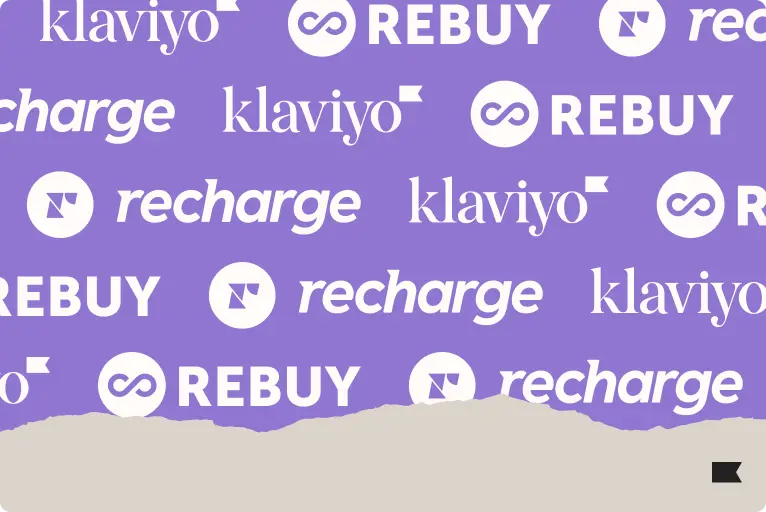Differences between SMS and email marketing: all about SMS vs email
The answer isn’t as obvious as it may seem.
Although the answer to the question, “What’s the difference between SMS and email?” may seem obvious, each platform will affect your marketing strategy in several ways—beyond just the fact you’re sending to an inbox versus a phone.
While email and text channels may be used simultaneously, the messaging, tone, and information you include will vary between both, even if the offer is the same.
So, what are the real differences between SMS vs email? Keep reading to find out how to adjust your content for each channel.
Read more on getting started with SMS marketing
Creating content for text and email marketing
SMS is for urgent and time sensitive content: Phones are easily accessible to most people, they read 90 percent of text messages within three minutes of receiving them. SMS marketing is more personal because it goes straight to your subscribers’ phones, which most people have on their person almost 24/7 and use to stay in touch with family and friends.
Since texting is a more personal communication method than email, it’s important that every text message you send has some value for your recipients.
Text subscribers are much quicker to unsubscribe than email subscribers.
Both ideas—the intimacy and immediacy of texting—affect what you send to subscribers. That’s why SMS is best used for time-sensitive or urgent messages.
SMS marketing tips and strategies that help you get started
Email is more commonplace, and content can be diverse: Many brands use newsletters as an incentive to get visitors to subscribe to their marketing and then use them to communicate product updates, company updates, and other information that you might not want to send over text. Not to mention, many consumers are used to brands contacting them through email, but receiving promotions through text is a new concept for most people.
Email marketing and its benefits for ecommerce businesses
SMS vs email content example: People are generally more hesitant to provide businesses with their phone numbers, whereas email is used for almost anything, from work emails to personal matters.
For example, if you were having a one-hour flash sale, you’d probably want to tell your customers over SMS rather than email because they’re more likely to open the text and shop immediately before the sale is over. With email, they’re more likely to miss it if they don’t check their inbox for a few hours.
Tip: While there are plenty of messages that would work well for both SMS and email (think: new product announcements, back-in-stock notifications, and sales), consider how that content will translate across the two different channels, which brings us to the next consideration.
SMS marketing use cases that drive your business
How to decide the length of content for your SMS campaign
SMS should be direct and actionable: One of the main differences between text and email is that texts are inherently going to be much shorter.
Each SMS can only be 160 characters each, so you’ve got to make every word count. Because people read their texts on a much smaller screen, you also have a lot less room to get your message across and no one wants to read a text that’s multiple paragraphs long.
For text messages, you’ll probably want to stick to one offer, campaign, or idea and pick a single offer you want to promote over text that you feel will be the most relevant to your SMS subscribers. Maybe it’s a big discount off a popular item or a promotion for a new product. No matter what you choose, make sure it’s direct and actionable.
Email campaigns are more comprehensive: Email campaigns have more space, more dynamic content and can be used in multiple ways. The key is understanding your audience and targeting them with their most preferred mode of communication.
Tip: While your brand voice should remain consistent across all channels, the limitations of texting mean that you must keep your messaging short, sweet, and to-the-point. Over email, you have more room to explain different concepts and share lots of content.
Think about how much harder it would be to follow a how-to tutorial or a recipe over text in comparison to email where you’d have enough room to thoroughly explain multiple steps.
SMS Marketing two way text messaging and SMS conversations
How to select what media to feature in your text
SMS or MMS-getting creative with text campaigns: With SMS campaigns, you have to be precise in what media you decide to use in each message because you can only send one MMS (Multimedia Messaging Service) per text. Additionally, you’re more limited to the kinds of media you can send over SMS since you can only send images and GIFs.
Email is for all types of campaigns: Over email, you can include all kinds of images, videos, GIFs, and other media to help drive your point home with subscribers. Want to include a YouTube how-to video for your product? Go ahead. Want to include multiple images of different products? Easy. Want to include both, then sign off with a GIF? Simple enough.
Example: For example, if you run marketing for an apparel brand and you’re having an upcoming sale on your summer collection, you might want to send an email that includes multiple lifestyle images including the products that’ll be discounted to highlight the different styles.
With text, on the other hand, you either must choose one image to represent the entire collection or you could create a GIF that scrolls through multiple product images.
Tip: While it can be challenging to identify the right images or GIFs to use in your text, thinking critically about your MMS is good practice for narrowing down your offer. When it comes to the media you include in your texts, be strategic in order to get your message across without depending heavily on visual aids.
SMS campaigns to create that help support multi-channel marketing
How to pick a call-to-action
Email has multiple options for CTA: With email, the possibilities are endless when it comes to call-to-actions (CTAs)—you could include multiple CTAs, change up the style of your buttons, or even use emojis for your text.
Not going to lie, I’ve never ever seen this or even thought to try this.
I LOVE the use of emoji’s as the CTA button.
WOW!
I’m going to be testing this ASAP! pic.twitter.com/OVVbH7zkbw
For example, in an email, you might have one CTA to shop your current sale and one CTA to shop new arrivals. You can get creative with the copy and differentiate what the buttons would say, switch up the colors, or maybe even hyperlink the text in your body copy and forgo buttons all-together.
There are also other helpful links in marketing emails including social following buttons and navigational items such as a link to your website homepage or return policies.
SMS allows one CTA: With SMS, it’s a best practice to only include one link, which means you can only have CTA. While in email marketing, it’s generally a best practice to avoid having too many CTAs so as to not confuse your audience, people will often include more than one.
Similar to the use of images and length of your content, with SMS CTAs you have to be selective about what you decide to share in order to make the most impact and illicit the most clicks from your subscribers.
Email and SMS marketing platform that provides email and text marketing templates for campaigns
How to understand the frequency of sending
Limit the frequency of text massages: When sending a text massage you should be messaging your audience far less often than with email since customers are likely to unsubscribe if they’re receiving too many texts from your brand.
That’s not to say that you can’t include multiple messages as part of SMS automation, but you do need to spread them out over a longer period of time compared to email and, in general, you’ll probably have fewer touches than email automation.
Combine SMS and email campaigns for better engagement: For example, a welcome series over text may include two or three messages over the span of a few weeks, while an email welcome series could have four or five messages within one week.
Both of those are appropriate frequencies for each channel, but if you were to send five texts over the course of a week to a new SMS subscriber, you’re more likely to annoy your customers and see high unsubscribe rates.
Also, keep in mind that you can use SMS to complement email instead of relying on standalone marketing automations on either channel.
For example, with your welcome series, you could send your first message over text then follow up with two or three emails to educate your audience on your brand without spamming their personal phones.
Thinking about how you can use SMS to complement your email marketing strategy like this will help you engage customers through different experiences and set you up for long-term success on both channels.
Alongside thinking about frequency, you have to be considerate of timing on each channel, as well. You might not think twice about sending out an email campaign at 11:00 p.m. on a Monday night, especially if you find that’s the optimal time for your brand to send emails, but would a text message at the same time be well-received?
The difference between SMS and email
When thinking about SMS compared to email, it all comes down to considering how people interact with both channels and what kinds of content you can send on each.
The good news is that you don’t have to know exactly the best way to communicate on each platform right away. As you gather customer data on both channels and begin tracking engagement, it’ll become more evident over time what content, media, CTAs, and frequency resonate with your audience on SMS versus email and how you should differentiate your marketing for each channel.
Interested in more SMS marketing tips? Learn how to use SMS short codes or toll free numbers so that all your campaigns stand out.
Related content

Discover the best marketing automation platform for 2026 and learn how to choose based on data, integrations, scalability, and the features that drive real customer value.

Discover 4 proven ways to reduce cart abandonment and recover lost sales. Learn how to build trust, streamline check-out, and personalize abandoned cart flows to convert more shoppers.

Looking for the best Shopify apps for marketing and customer service? Klaviyo, Rebuy, and Recharge together create a high-performing tech stack that revenue and customer retention.